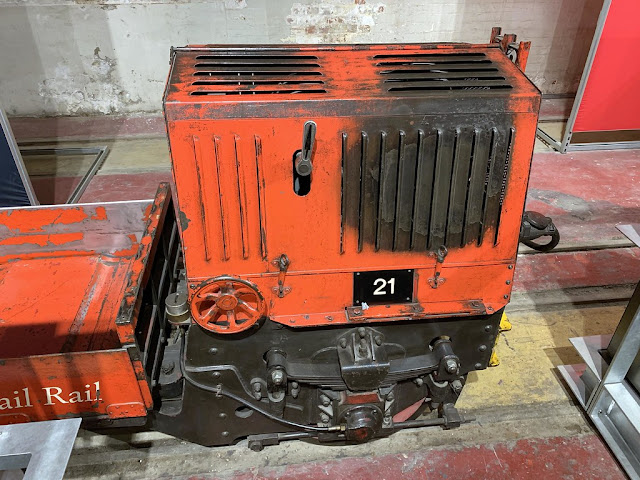 |
| A preserved 1980 Stock train at the Postal Museum |
| Information | |
|---|---|
| Number built: | 34 |
| Built: | 1980-82 |
| Builder: | Greenwood & Batley, Hunslet Engine Company |
| Motor: | English Electric (440v DC third rail) |
| Power: | 22 hp (16 kW) |
| Wheel arrangement: | 2w-2-2-2wRE |
The origin of the 1980 Stock goes back to the 1960s and two prototypes built as the 1962 Stock. These were updated versions of the 1930/1936 Stock with new motors for better acceleration, disc brakes and improvements for loading and unloading mail [2]. These prototypes were extensively tested though the decision to built a series fleet based on the prototypes did not come about until the late 1970s [3].
The new fleet was an updated version of the prototypes. An order was placed with Greenwood & Batley though the manufacturer went into administration in 1980 after just three were built. Hunslet Engine Company, who took over Greenwood & Batley, built the bulk of the fleet despite that the 1980 Stock are often referred to as Greenbats.
The 1980 Stock formed the backbone of the Post Office Railway (which was re-branded as Mail Rail) along with some 1930/1936 Stock until the system was shut down. Some 1980 Stock was fitted with aerodynamic covers to reduce air resistence in the tunnels.
A number of 1980 Stock trains have been officially preserved, it is thought the rest are also still extant stored on the Mail Rail network which is closed (apart from the Postal Museum tourist attraction at Mount Pleasant - a Museum Train now runs on some of the track) but mostly intact.
 |
| Number 30 at Mount Pleasant |
 |
| The system was renamed Mail Rail in it's latter years |
 |
| Side view of the motor compartment of 21 |
 |
| How the post was carried on the trains, the trollies transferred at stations |
 |
| Number 30 at Mount Pleasant, dwarfed by the station tunnel |
[1] Peter Johnson, Mail by Rail (Ian Allan, 1995) p. 115
[2] Mike Sullivan, Mail Rail (Red Shank Books, 2019) p. 24
[3] Johnson p. 122
















